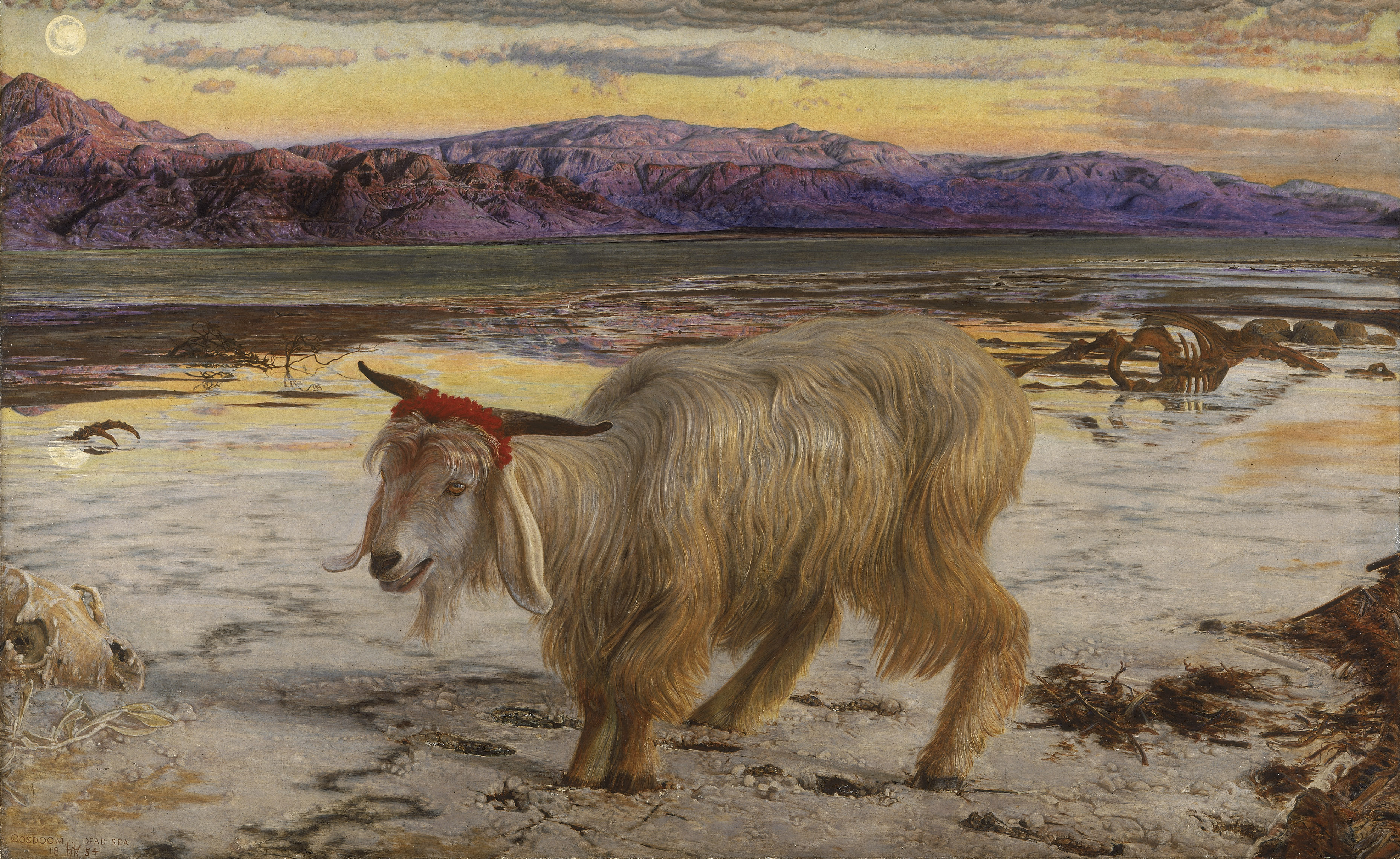| Winter lambing, underpainting, by little ol’ me. |
If you were properly brought up on James Herriot, you know that a late winter blizzard can play havoc with lambing. This is not just an historical oddity; last spring a mid-April blizzard in Northern Ireland killed 17,000 lambs and sheep. Cold is not their only enemy. Weak and stranded sheep are at the mercy of predators.
I’m apparently in the minority in being a fan of snow, but it’s a great thermal insulator, it supplies us with all the fresh water we need, and it sweeps the world clean. I think it makes a perfect metaphor for grace. As for the lamb, I assume that needs no explanation.
 |
|
The Scapegoat by William Holman Hunt, second version, 1854–6.
|
William Holman Hunt made a similar assumption with The Scapegoat. The painting was deeply meaningful to the artist, who painted two versions following a crisis of faith. The painting identifies the scapegoat of Leviticus 16:22 as a prototype for the Messiah as “suffering servant” as described in Isaiah 53:4.
.jpg) |
|
The Scapegoat by William Holman Hunt, first version, 1854–5.
|
After struggling for two years to make something of it, Hunt showed the painting to the Belgian art dealer Gambart:
“What do you call that?”
“The Scapegoat.”
“Yes, but what is it doing?”
“You will understand by the title, Le bouc expiatoire.”
“But why expiatoire?” he asked.
“Well, there is a book called the Bible, which gives an account of the animal. You will remember.”
“No,” he replied, “I never heard of it.”
“Ah, I forgot, the book is not known in France, but English people read it more or less,” I said, “and they would all understand the story of the beast being driven into the wilderness.”
“You are mistaken. No one would know anything about it, and if I bought the picture it would be left on my hands. Now, we will see,” replied the dealer. “My wife is an English lady, there is a friend of hers, an English girl, in the carriage with her, we will ask them up, you shall tell them the title; we will see. Do not say more.”
The ladies were conducted into the room. “Oh how pretty! What is it?” they asked.
“It is The Scapegoat,” I said.
There was a pause. “Oh yes,” they commented to one another, “it is a peculiar goat, you can see by the ears; they droop so.”
The dealer then, nodding with a smile towards me, said to them, “It is in the wilderness.”
The ladies: “Is that the wilderness now? Are you intending to introduce any others of the flock?”
Sometimes metaphor is an uphill battle.
Let me know if you’re interested in painting with me in Maine in 2014 or Rochester at any time. Click here for more information on my Maine workshops!
